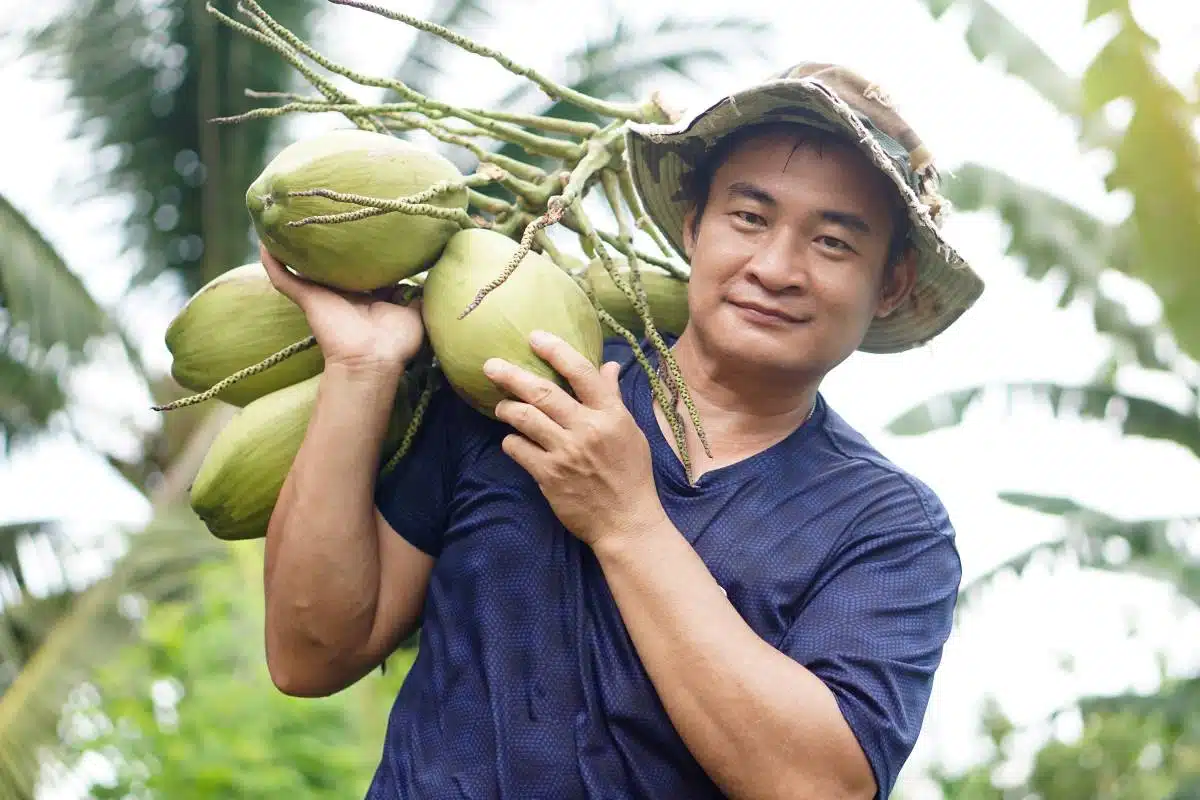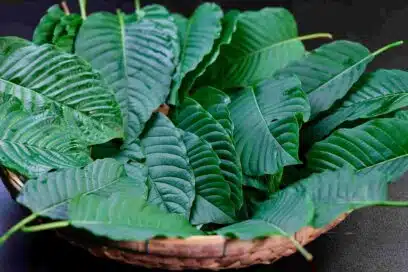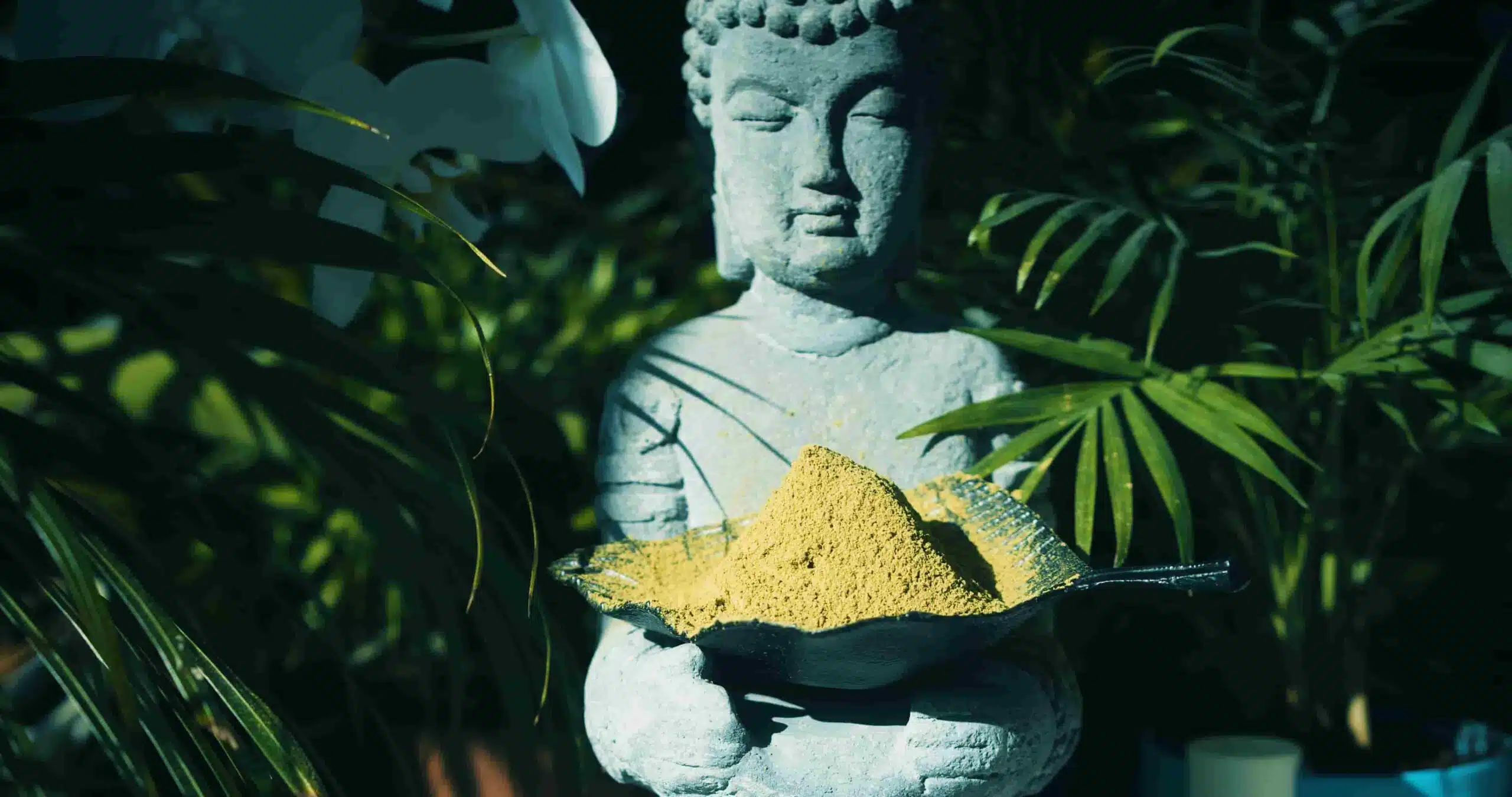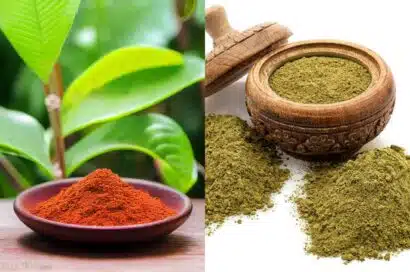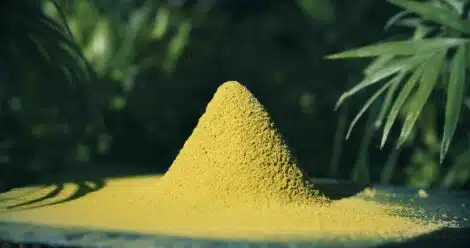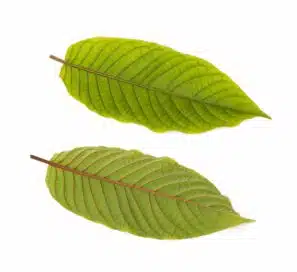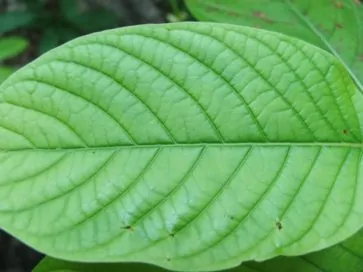Like most other centuries-old cultivars, kratom is a complex plant. It’s impossible to explain all of the nuances regarding kratom’s history, cultivation preferences, and unique properties in one blog post. Plus, since most kratom master breeders are in Southeast Asia, there’s still a relative lack of data available to Westerners. Although more botanists are learning about kratom, it will take years to iron out the many regional distinctions that inevitably get “lost in translation.”
Although kratom’s Mitragyna speciosa species is somewhat mysterious, scientists and kratom shop owners have more knowledge than they did a few years ago. Most of the significant distinctions between kratom strains have been worked out, and consumers can take advantage of this knowledge. Anyone new to the kratom industry should review the numerous kratom strains to determine what suits their needs.
Before detailing the most prominent kratom strain names, customers need to have a working knowledge of “kratom vein colors.” To be frank, you could figure out any kratom strain’s standard properties by learning to distinguish each kratom vein color.
Since every kratom strain falls into one of these brackets — and since kratom vein colors are associated with unique features — you’ll have an easier time determining a strain’s expected properties by knowing its color. Many kratom strains are available in multiple colors, so you must know which variety you have to gauge its unique qualities.
Although you can’t see these distinct vein colors in ground kratom powders or capsules, they are present in whatever kratom flower cultivators harvest. Since vein color is such a significant feature, reputable kratom vendors should always supply you with this info with each kratom product. Please always consider the kratom vein color when evaluating a kratom strain online or in a headshop.
Even though red kratom takes the longest to reach harvest, it tends to be the most popular and readily available in kratom shops. Before collecting these leaves, kratom cultivators must always wait for their kratom flowers to reach late-stage maturity. In some cases, red vein strains also have to go through multiple rounds of fermentation before thye’re ready to get shipped to customers.
On a molecular level, some scientists believe red vein kratom has more of the alkaloid 7-hydroxymitragynine rather than the alkaloid mitragynine. We still need more tests to evaluate just what this finding means for red vein kratom strains.
Just because red vein kratom is the “oldest” cultivar doesn’t mean it’s inherently “better” than other strains. Kratom doesn’t work like fine wine. The longer a kratom strain ages doesn’t necessarily mean it’s “more valuable.”
Finding the perfect kratom strain will always be unique to your situation. A “great” kratom strain largely depends on the skill of the cultivator and whether they followed the proper procedures when harvesting their respective vein color.
You could think of green kratom as a “middle of the road” kratom strain. Green vein kratom cultivars seem to have balanced alkaloid concentrations, and they typically take a medium length of time to mature. Since green vein kratom develops after white vein and before red vein, they’re often thought to be a mix of these other colors.

White kratom strains tend to be the rarest kratom cultivars. As hinted above, cultivators must pluck their white vein kratom strains early in the season to capture this bright white appearance. Regarding alkaloid content, many scientists believe white vein kratom is the inverse of red vein kratom (i.e., it has more mitragynine than 7-hydroxymitragynine).
Please remember that this deliberately early harvest doesn’t mean white strains are “bad.” As long as kratom cultivators have plenty of experience harvesting this crop, white vein kratom is as “high-quality” as red or green vein kratom strains. The only difference is that farmers can’t pluck as many white vein kratom flowers because not as many grow during the pre-peak harvest. The lower returns on white vein kratom strains may explain why it’s less common in kratom shops.
In many official “kratom courses,” people only learn the “big three” vein colors listed above. However, there’s some controversy in the kratom community over whether to include “yellow” and “gold” vein strains.
In many cases, yellow kratom strains are simply in a transition stage between white, green, and red. So, they might be considered “in-between” kratom leaves. However, in some cases, kratom cultivators may use specialized drying techniques to alter the color of their strains to yellow or gold. Unfortunately, it’s unknown whether these color variations significantly alter the chemical composition of yellow vein kratom and gold strains.
Although yellow and gold kratom strains aren’t “official,” it’s significant for kratom fans to keep an eye out on the latest developments in this field.
Please Remember The Kratom Vein Process Is Natural!
Before moving on, we should repeat that the kratom plant’s veins naturally change color. We mention this because other kratom vendors seem to obscure this fact. Since many people don’t understand the complexities of the kratom cultivation process, some shops may assume people would gravitate towards more mature red strains because they “sound better.”
While some customers equate extra time and fermentation with “higher quality,” it’s not accurate to claim that different kratom vein colors are only due to the drying and curing processes. At The Golden Monk, we believe in educating customers about kratom so they can make an informed decision. Even though kratom vein colors indicate different points in the plant’s growth cycle, they do not influence the “quality” of a strain.
Yes, each vein color has different properties, but what matters is the skill of your kratom cultivator. A master kratom breeder will know precisely when to harvest red, green, white, and yellow/gold strains to bring out their essential qualities.
Now that our primer on kratom vein colors is out of the way, we can move on to some of the most famous strain names in the kratom kingdom. Please be sure to keep this list handy as you start shopping around for your first kratom powder.
Arguably the most in-demand kratom strain, Maeng Da is an Indonesian strain that roughly translates to “pimp.” Apparently, this West Kalimantan strain earned its distinctive name due to its high concentrations of alkaloids. Some people argue each Maeng Da cultivar has one of the most outstanding concentrations of unique compounds.
A big reason for Maeng Da’s unique chemical properties may be due to a technique known as “grafting.” Unlike many other kratom strains, Maeng Da combines various high-quality cultivars that go through a special grafting procedure. By combining all of the best kratom cultivars, Maeng Da ends up with “pimp-grade” strength!
Named after its origins in Malaysia, Malay isn’t as well known for its ultra-high alkaloid concentrations. Indeed, many people gravitate to Malay strains like Super Green Malay when they want to observe a strain with balanced alkaloid percentages. It’s also said that Malay strains have some of the lightest and most floral aromatics in kratom, adding to their many desirable qualities.
“Horn” kratom gets its name from the unmistakable jagged edges of its leaves. Found in Indonesia and Malaysia, Horn kratom cultivars grow in all the major vein colors with their distinctive qualities. Thankfully, people who buy well-ground kratom powder won’t have to worry about pricking their pinkies with a spiky Horn kratom cultivar!

Like Malay, Thai takes its name from its place of origin: Thailand! Although Thai is available in red, green, and white varieties, most kratom fans emphasize White Thai. Not only is White Thai more difficult to find, it’s said to have Maeng Da-like concentrations of alkaloids. People who are more familiar with collecting kratom may want to take a closer look at the unique chemical qualities of Thai kratom powder.
Indonesia cultivates many of the world’s best-known kratom strains, including the renowned Maeng Da. Interestingly, Indonesia’s namesake “Indo” strain isn’t as popular as other strains that don’t reference Indonesia!
Since Indo isn’t as widely available in the West, not as much is known about its qualities. We do know that Indo kratom cultivars are typically available in red and white vein varieties.
Interestingly, some people report that Red Indo has incredibly dense cell walls that may make them more fibrous than other strains. White Indo, however, is so rare that it’s next to impossible to study it in the West.
Customers interested in exotic kratom cultivars may want to spend extra time investigating Indo.
Borneo is a fascinating island that mainly falls within Indonesia’s jurisdiction. It also happens to be an excellent destination for kratom cultivation. The star kratom strain from this island is none other than “Borneo,” which is available as a red, white, and green strain.
Like most other kratom cultivars, White Borneo is the rarest of the three, but these strains are rather scarce since they all hail from a relatively small island. One distinct trait Borneo strains seem to share is a delightfully mild aroma. People who can’t stand smelling the bitter notes of other strains like Maeng Da may appreciate Borneo’s more balanced terpenes.
Anyone who hasn’t seen Elephant kratom leaves should look up a few images when they get a chance. As you’ll soon discover, these kratom strains live up to their “big” name with huge leaves that mimic an elephant’s floppy ear.
Ironically, the Elephant kratom strain doesn’t seem to have “giant” alkaloid concentrations. Indeed, many people get interested in Elephant kratom because of its “tinier” traces of compounds, which may give it a more balanced chemical structure. Also, many customers claim that no matter what Elephant strain people choose, they always tend to have mixed properties from red, white, and green strains.
Like Borneo, Hulu Kapuas kratom is restricted to a select area of Indonesia. In this case, cultivators could only harvest Hulu Kapuas in the Hulu Forest near the Kapuas River. For some reason, the kratom that evolved in this area has an alkaloid property unlike other kratom varieties.
It’s difficult to describe how Hulu Kapuas compares with other kratom strains, but people who have experience collecting kratom instantly recognize a distinct aroma and alkaloid concentration. Green Hulu Kapuas remains the most scarce of the three vein colors, and hence the most desirable amongst collectors.

Most people don’t believe the Kali kratom strain was named after the terrifying Hindu deity. Instead, Kali seems to be shorthand for the Kalimantan region of Indonesia, where Kali naturally evolved.
Available in a red and green vein form, the Kali kratom cultivar also doesn’t appear to have the “crazy” traits the goddess Kali has in Hindu art. In fact, many people believe Kali kratom is one of the mildest in terms of alkaloid content, and hence a great option for new kratom collectors.
Dragon kratom may be the equivalent of a “VIP kratom strain.” Although many vendors put out strains that say they’re “Red Dragon Kratom,” true Dragon kratom should only come from one exclusive farm in Southeast Asia. Apparently, this farm has a unique cultivation technique that brings out the proprietary alkaloid concentrations on this “fiery” strain.
It’s unknown why breeders chose the name “Dragon” for this strain, but it may have to do with the bright red color. Some people also suggest some caffeine may be present in Red Dragon Kratom strains. Since kratom is botanically related to the coffee bean, that’s not as crazy as it may sound!
Vietnam isn’t the most well-known country for kratom cultivation, but it does have a signature strain available in all vein colors — including yellow and gold!
Similar to a few other kratom strains on this list, many customers use the term “balanced” to describe Vietnam kratom’s average alkaloid concentrations. Since Vietnam kratom is available in many colors, it’s one of the best “sample strains” to appreciate the subtle distinctions between red, white, green, and yellow/gold.
Like Borneo, Sumatra is an Indonesian island home to a signature kratom strain. Available in white, red, and green varieties, Sumatra kratom takes on the standard qualities of each of these vein colors. White Sumatra is the most difficult to find of these three and arguably has the highest alkaloid concentrations.
Those looking for more balanced alkaloid levels should focus on Green Sumatra. As for Red Sumatra, many say it’s similar (but not as forceful) as Maeng Da.

Like Vietnam, Cambodia isn’t as well known for kratom cultivation as Indonesia, Malaysia, or Thailand. However, the Cambodian strain has begun gaining attention in the international kratom community.
Interestingly, many people compare Cambodian kratom with Indonesia’s Maeng Da. There are a few reasons for this comparison. First, Cambodian has traces of green and red vein kratom leaves, similar to Maeng Da’s grafted leaves. Second, Cambodian kratom appears to have similar alkaloid concentrations to Maeng Da. So, it’s no surprise people familiar with Maeng Da will likely enjoy researching Cambodian kratom.
Riau is another celebrated Indonesian kratom strain named after a region in the country. Hailing from the Riau province, Riau kratom is available in red, white, and green variants. However, you’ll most likely find Red Riau when shopping in kratom vendors. Not only is Red Riau the most abundant version of this strain, it tends to be the most popular with collectors. People are incredibly impressed with Red Riau’s unique “smoky” and “musky” aromatics.
Ketapang is a region in Indonesia’s West Kalimantan district that’s home to yet another distinct kratom variety. Available in red, green, and white varieties, Ketapang seems to be a versatile strain with a sharp and bright scent. Many customers interested in this strain focus on Green Ketapang due to its relative scarcity and superb balance of alkaloids.
Although “JongKong” could refer to a traditional boat used in Southeast Asia, it’s unlikely the kratom strain “JongKong” has anything to do with this method of transportation. Instead, most kratom fans believe the “JongKong” strain is named after a tiny province set along the Kapuas River Valley. Currently, kratom cultivators offer three versions of JongKong, including red, white, and green strains.
Each of these three JongKong varieties has distinctive harvest procedures, which result in unique effects. For instance, White JongKong kratom is a fusion of two local white vein kratom cultivars. By contrast, Red JongKong can only come from ancient kratom-bearing trees in the region.
While scientists are still learning the intricacies of JongKong kratom, most people claim this strain is most similar to Maeng Da.

After reading through these kratom strain descriptions, you may start to feel your head spin! There are so many unique kratom cultivars, each offering a slightly different experience. Plus, when you factor in the distinct properties of each kratom vein color, it can become even more confusing to choose the “best” kratom strain on sites like The Golden Monk.
Although there’s no science to picking the “perfect” kratom powder, there are features you could look out for when evaluating kratom strains online. Always start with the strain’s vein color to get an overall impression of each kratom powder. Next, look at what other kratom collectors say about the unique properties of named strains. The more info you read on each kratom strain, the more likely you’ll get a clear sense of what this kratom strain is all about.
Note: The quality of your kratom should always supersede the strain type you choose. In other words, you must ensure your kratom vendor takes care to properly source, ship, and scan each kratom strain they offer. If your kratom manufacturer can’t give you a third-party lab test result, then chances are every strain in their catalog isn’t the highest quality.
To learn how The Golden Monk ensures our kratom strains meet rigorous standards for purity and transparency, please follow this link.

